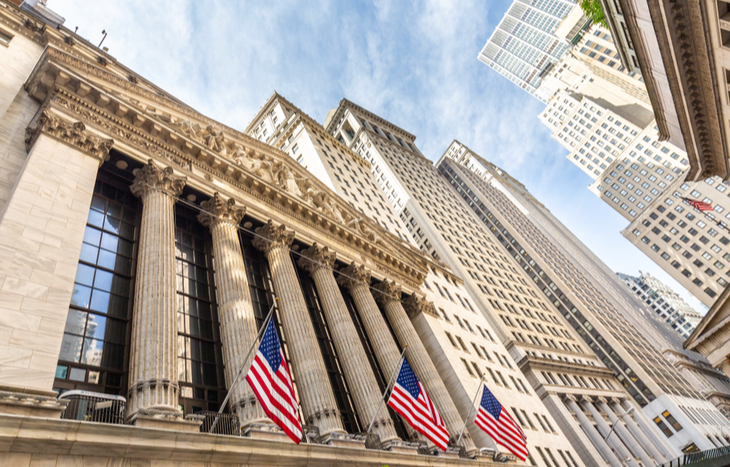What is a Mega Cap Company?
Think of the biggest brands in the world, and how massive these companies are. Now, think about how much they’re worth. If your mind goes to the iPhone in your pocket or the new Disney movie you’re taking the kids to see, you’re envisioning a mega cap company. These companies are the biggest of the big: typically, a stock with a market cap above $200 billion. They’re the heavyweights of the market and a surefire bet on success.
Mega cap companies haven’t always existed. In fact, it’s only recently that giants like Apple, Microsoft, and Amazon have tipped the trillion-dollar valuation mark. As these companies and others like them continue to grow larger, the mega cap designation becomes more important. It’s all about understanding market value in context.
Here’s a quick look at mega cap companies: who they are, what they represent and why it matters to distinguish them from other big-time companies that might not be on the same financial playing field.

What is Market Capitalization?
To understand mega cap companies, investors need to understand market capitalization. Market cap is the value of a company’s outstanding shares. It’s calculated by multiplying the current share price against the total number of shares. Mega cap companies are those whose total outstanding share value exceeds $200 billion.
For example, consider Johnson & Johnson (NYSE: JNJ). In July 2021, the company’s share price was roughly $169 with an average of ~2.67 billion outstanding shares, for a market cap of roughly ~$451 billion. This positions the company firmly in mega cap territory.
Companies’ market capitalizations change with the ebb and flow of its share price. A stock might breach $200 billion in value, then fall below that threshold again the following week. Remember that market capitalization thresholds aren’t hard and fast—rather, they’re good guidelines for evaluating companies based on size.
Examples of Mega Cap Companies
As mentioned, we’ve only recently crossed into trillion-dollar territory—and two-trillion-dollar territory quickly after. Apple was the first to reach a trillion dollars in August of 2018; then, the fastest to two trillion in August 2020. Since then, several other companies have broached the trillion-dollar mark. Here are the biggest of the mega cap companies:
- Apple (NASDAQ: AAPL), $2.594 trillion
- Microsoft (NASDAQ: MSFT), $2.253 trillion
- Alphabet (NASDAQ: GOOG), $1.932 trillion
- Amazon (NASDAQ: AMZN), $1.780 trillion
- Facebook (NASDAQ: FB), $1.079 trillion
There are roughly 47 mega cap companies today, with more pushing above $200 billion market cap levels by the month.
Large Cap vs. Mega Cap Companies
Many investors and brokers still lump mega cap companies in with large caps. While this is technically correct, it muddles the pool of large caps. The difference between a low-end large cap stock ($10 billion) and a company like Facebook, valued at a trillion dollars, is astronomical! For this reason, they tend to get split out once they rise above the $200 billion threshold. This isn’t to say large cap companies can’t be sizable—it’s just another delineation in the same way we separate micro cap from small cap or mid cap from large cap.
The Benefits of Investing in Mega Caps
What are the benefits of investing in mega cap companies? Aside from the extremely powerful sway they have over the market, there are plenty of reasons to love these behemoths:
- Most mega cap companies are also dividend paying companies. Dividend investors flock to them because of their stability and the healthy dividend they offer.
- Stability is a key factor for investors. The stock prices of gigantic companies rarely see big swings in either direction, making them great for risk-averse securities investors.
- Mega caps tend to have a mega moat. It’s not easy for other companies to swoop in and take market share from them. As a result, you can expect them to stay on top.
- Even in turbulent times, the biggest companies are bellwethers. Market downturn won’t affect big companies as much as little ones, which supports the bear market investor.
Without leaning too heavily on the “too big to fail” myth, it’s safe to say that the biggest draw of massive companies is their staying power. They simply make too much money and are too intertwined with everyday life to disappear. Investors appreciate that stability.
The Drawbacks of Mega Cap Investments
Despite the many positives, there are some drawbacks to putting all of your money in these companies. Some of the chief reasons include:
- There’s limited upside associated with the market’s biggest companies. While they’ll get bigger, they won’t get bigger faster than smaller companies with room to grow.
- It’s also important to remember that market cap isn’t intrinsic value. A mammoth market cap doesn’t mean the company is worth that much—it’s what people will pay.
- Lack of diversification can also be a problem when dealing with the biggest companies. Check the list again and you’ll see that it skews heavily towards the tech sector.
All in all, there are few downsides to investing in mega cap companies. And, what few drawbacks exist are easily countered by smart investing practices—namely, diversification.
Mega Caps Dominate the Market
It’s no secret that mega cap companies run the world. They’re the darlings of the investment world and much of the everyday ebb and flow of the major indices comes from the movement of mega caps. These companies are the market stalwarts, constantly setting new records for revenue and earnings, and benefitting from share price appreciation. They’ve gained the confidence of investors and aren’t likely to lose it any time soon.
To further advance your knowledge and grow your portfolio in the process, sign up for the Liberty Through Wealth e-letter below. Learn how you can build wealth in your life by making smarter investment decisions.
[adzerk-get-ad zone="245143" size="4"]




